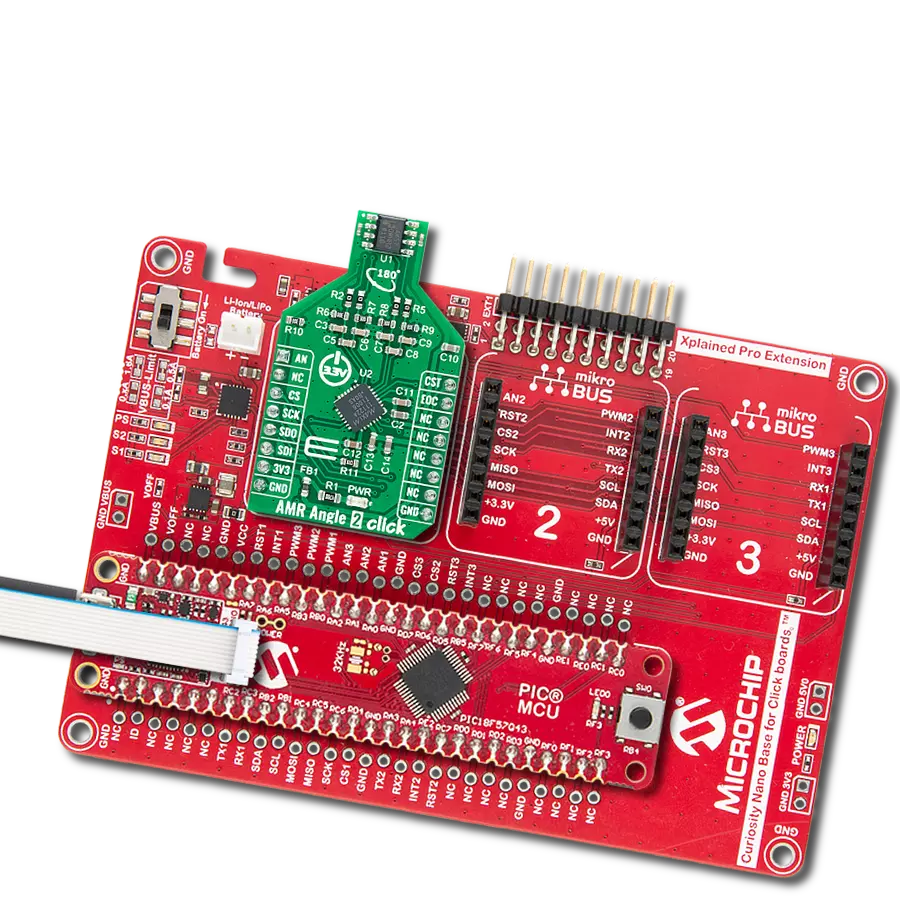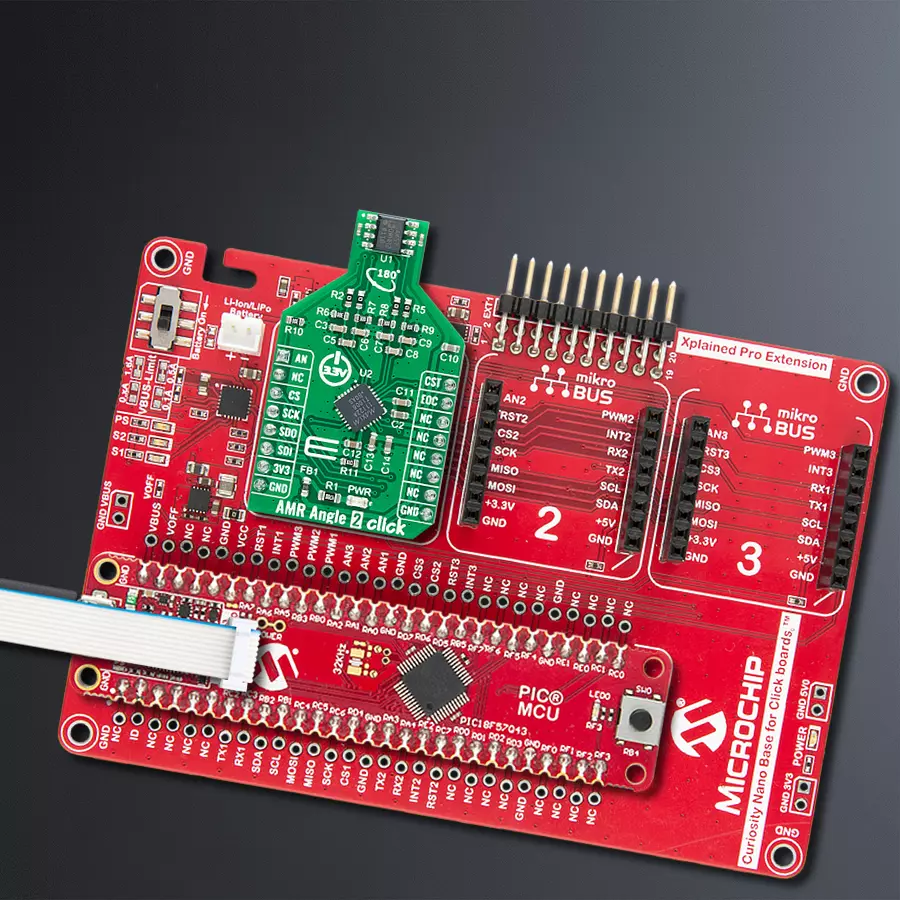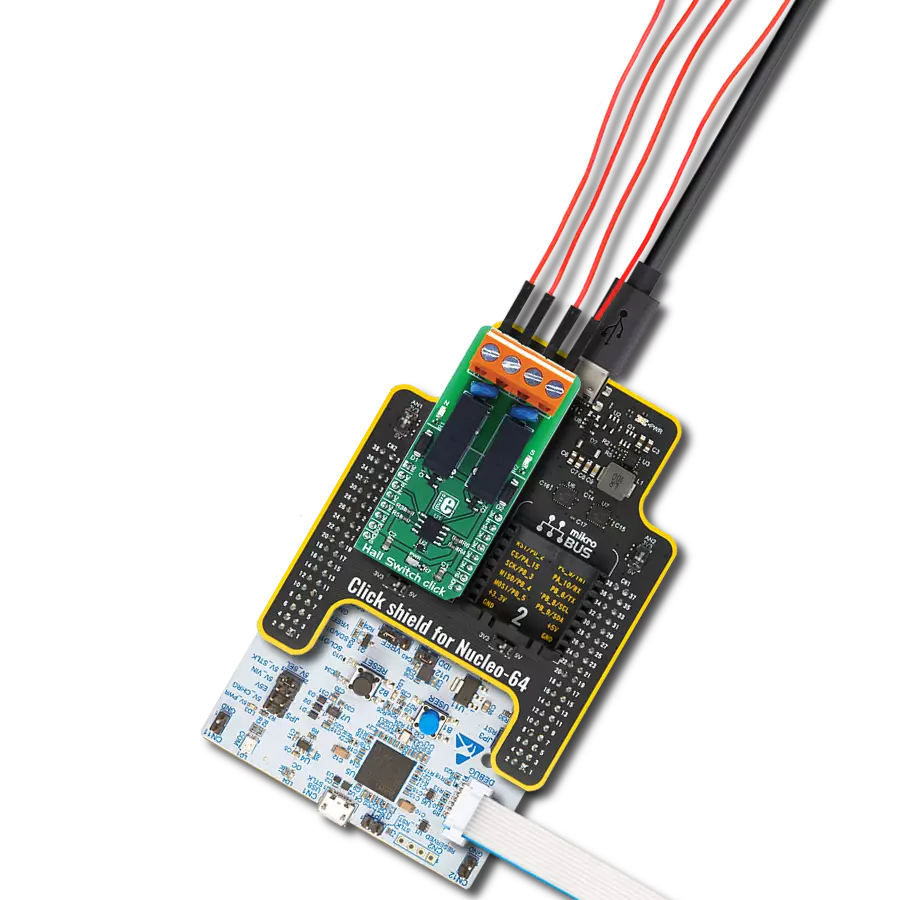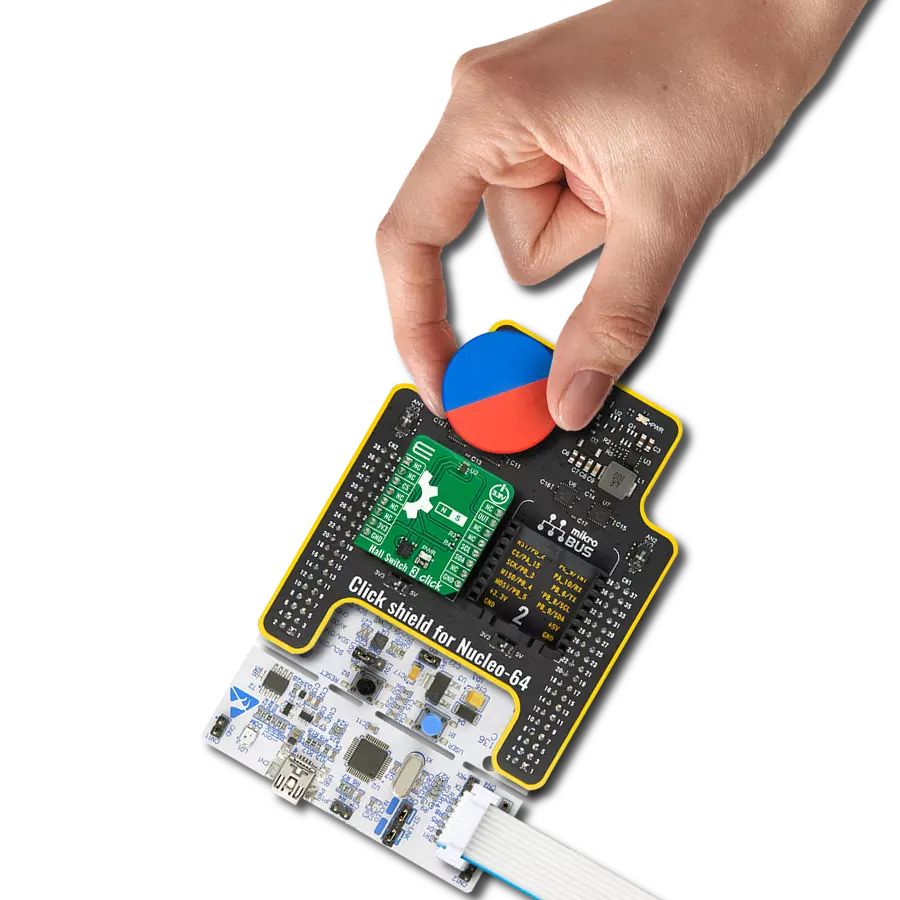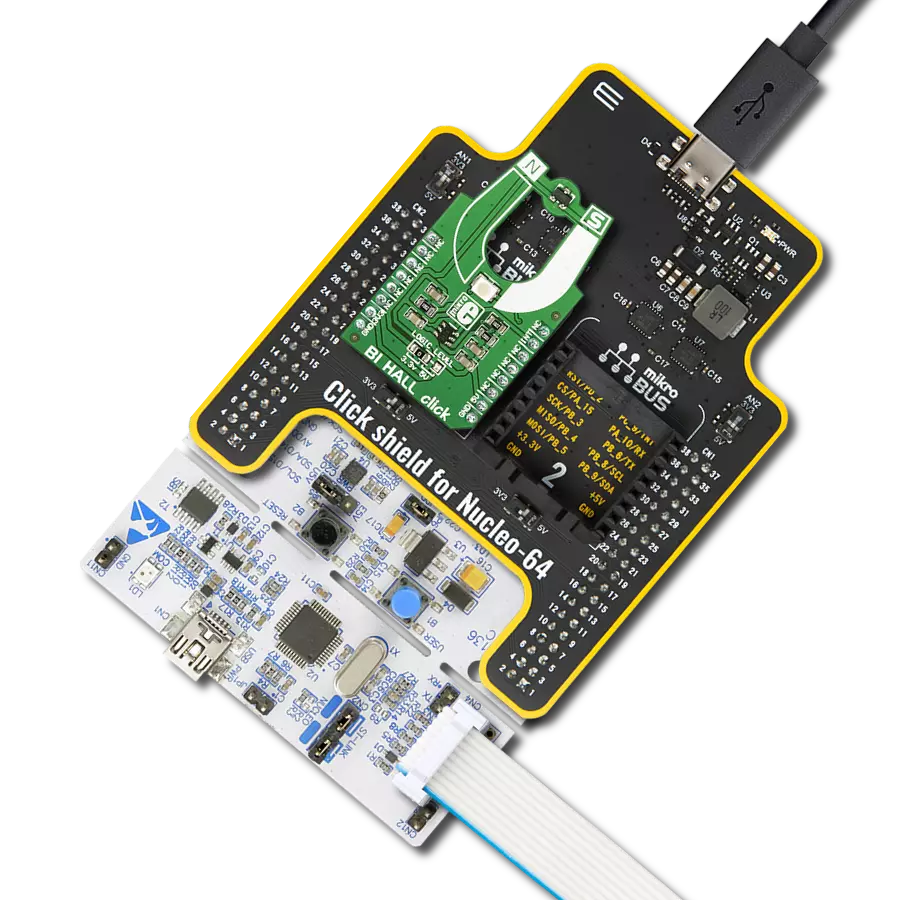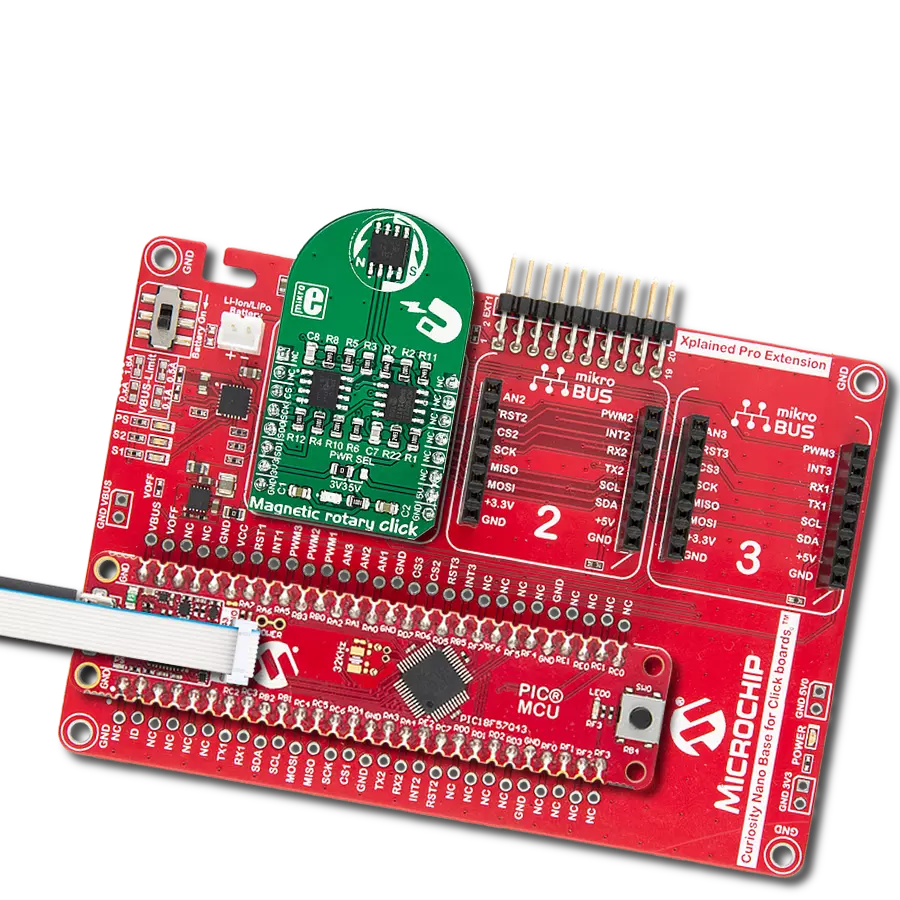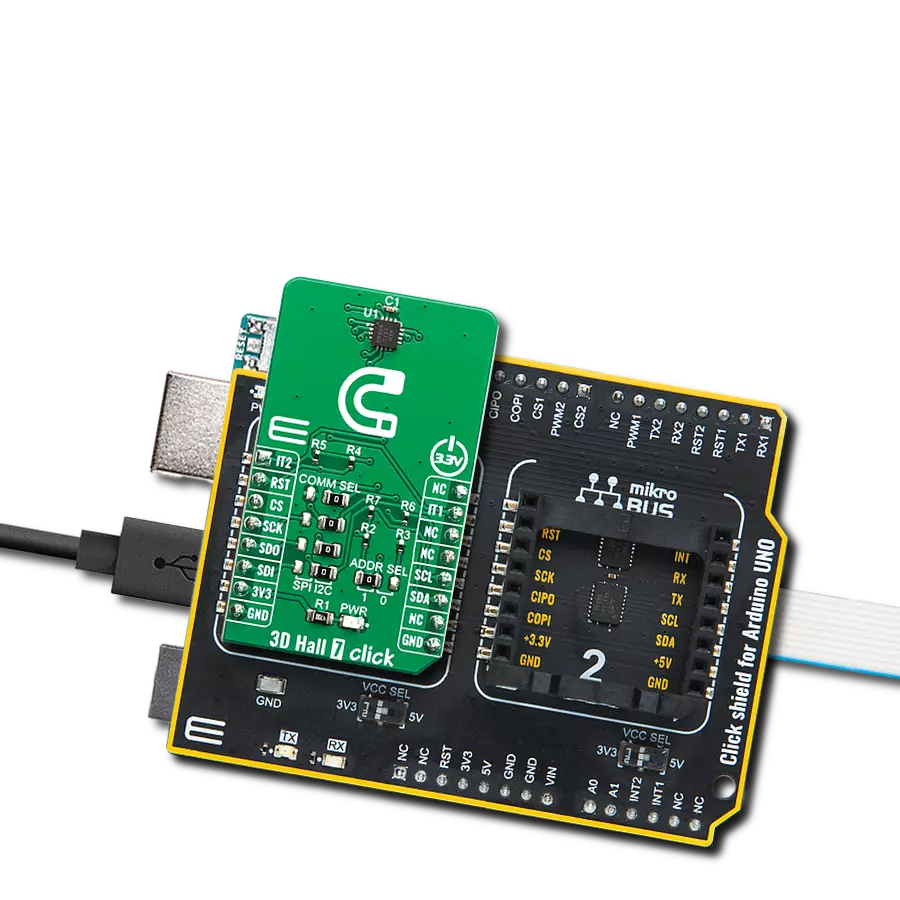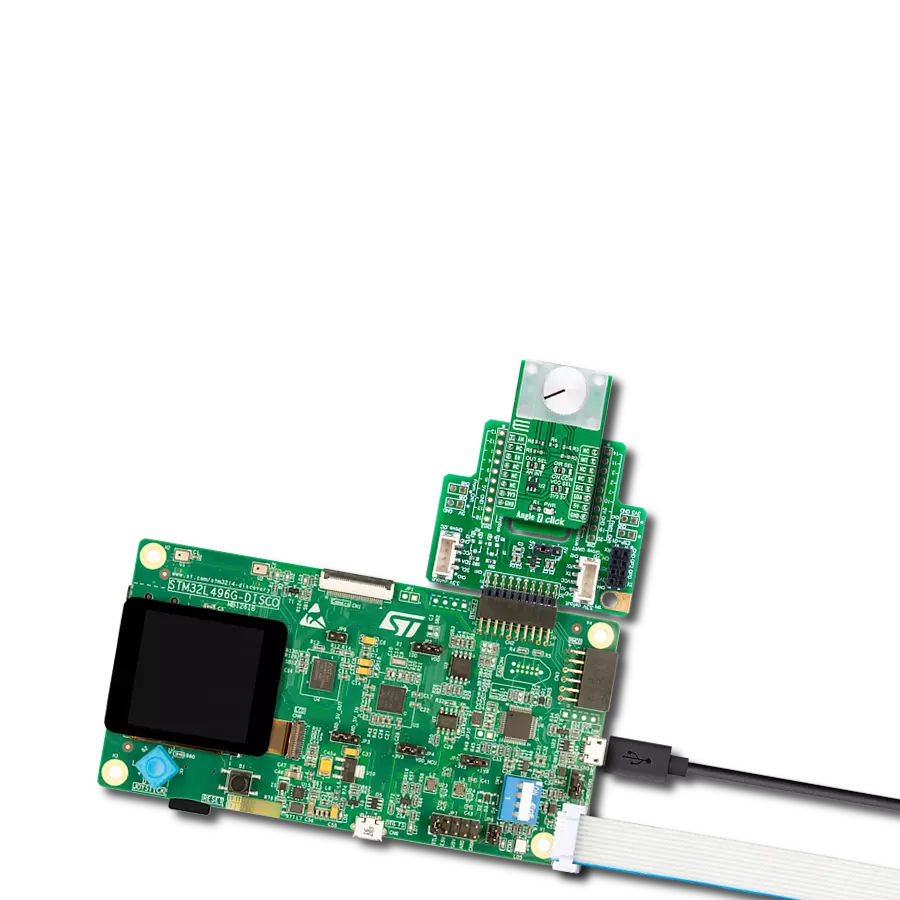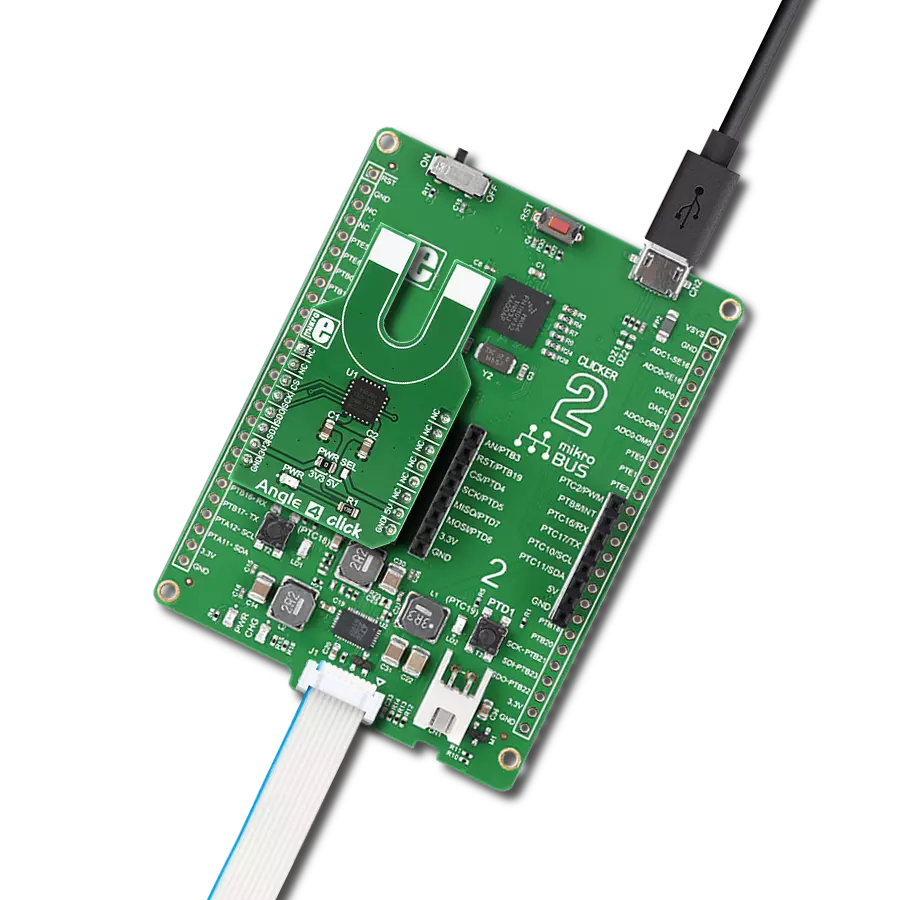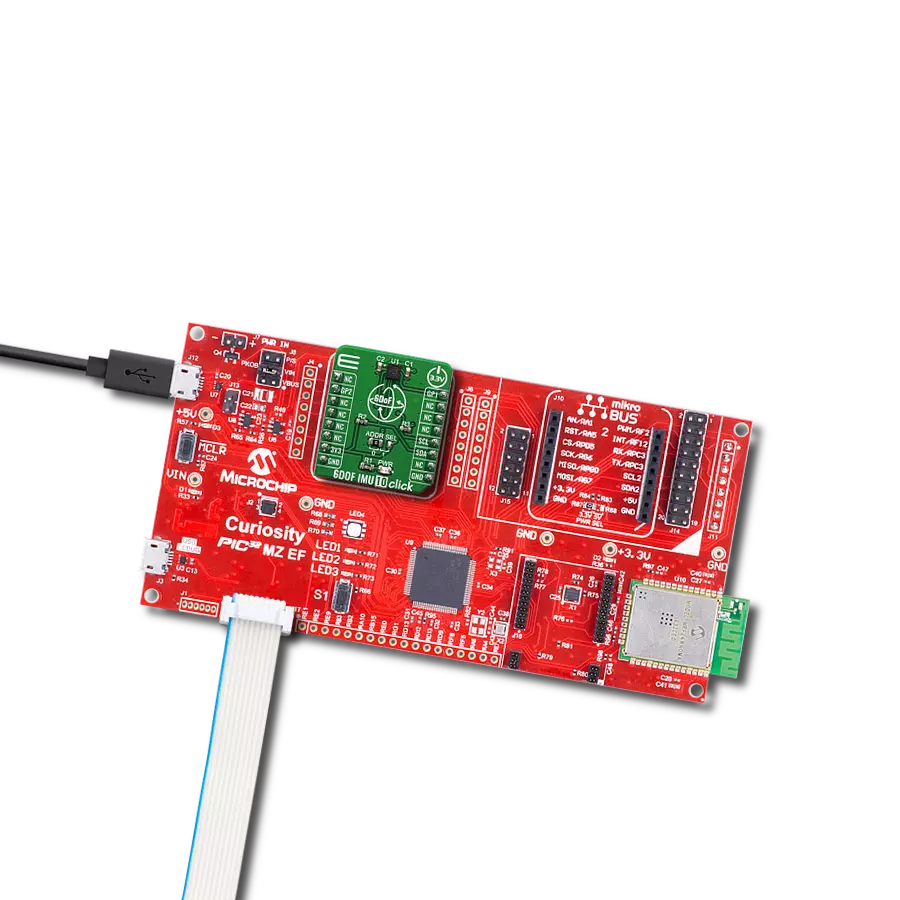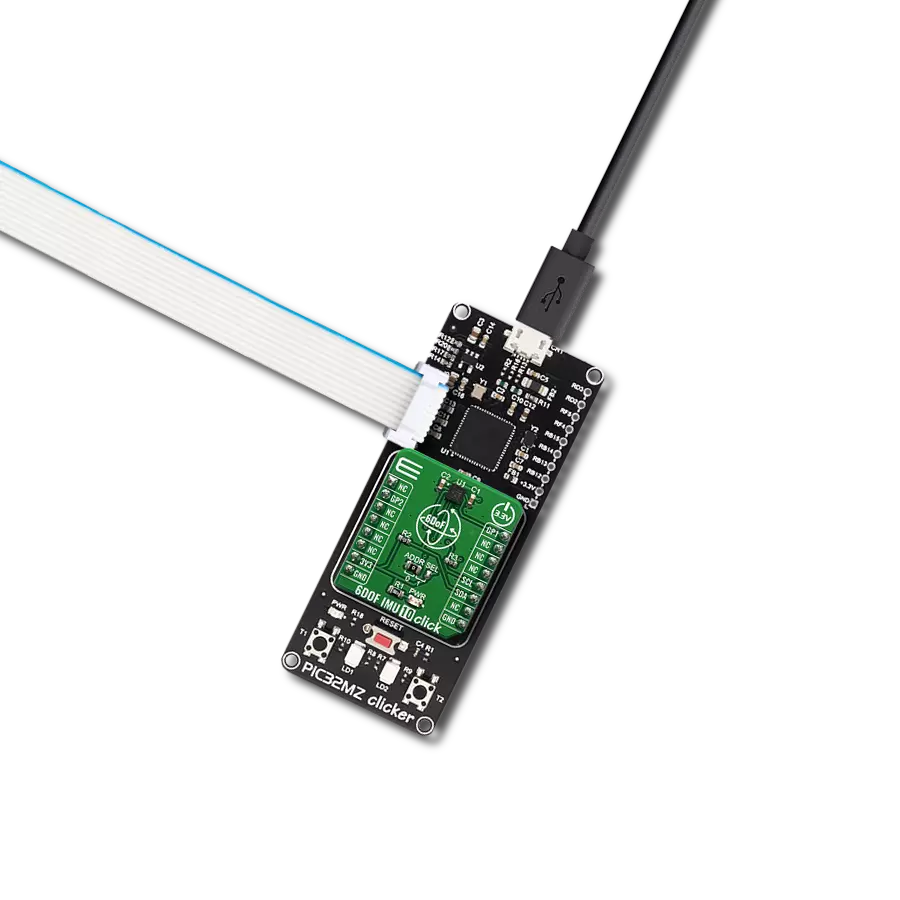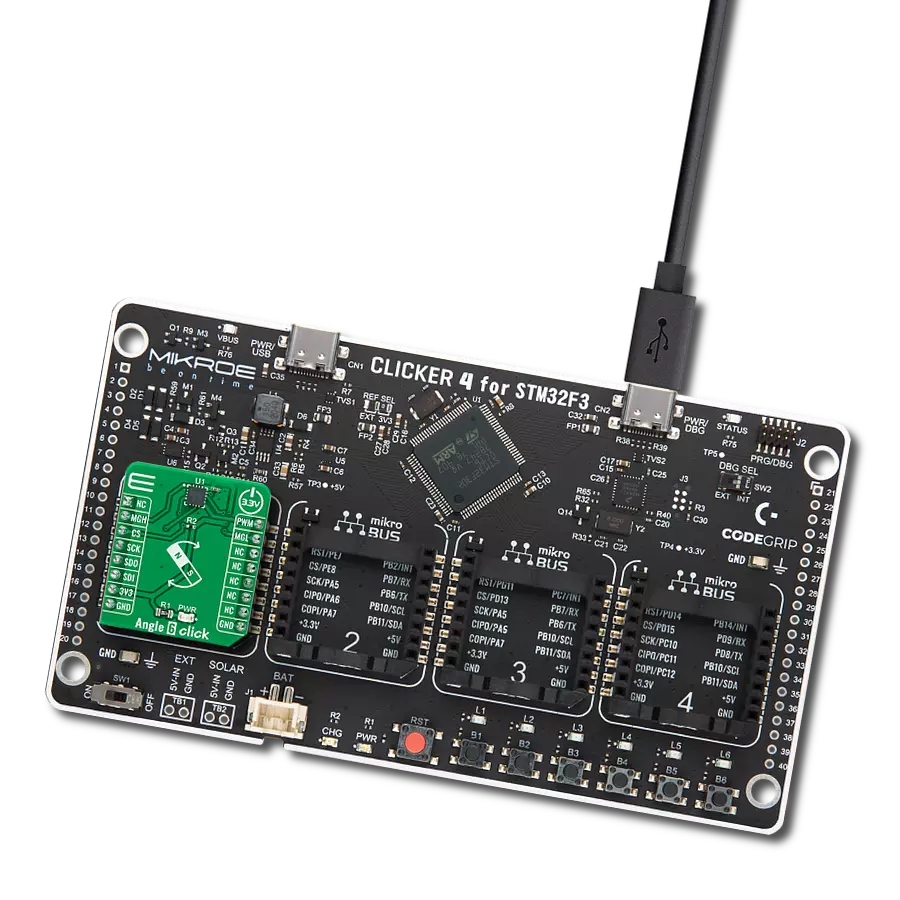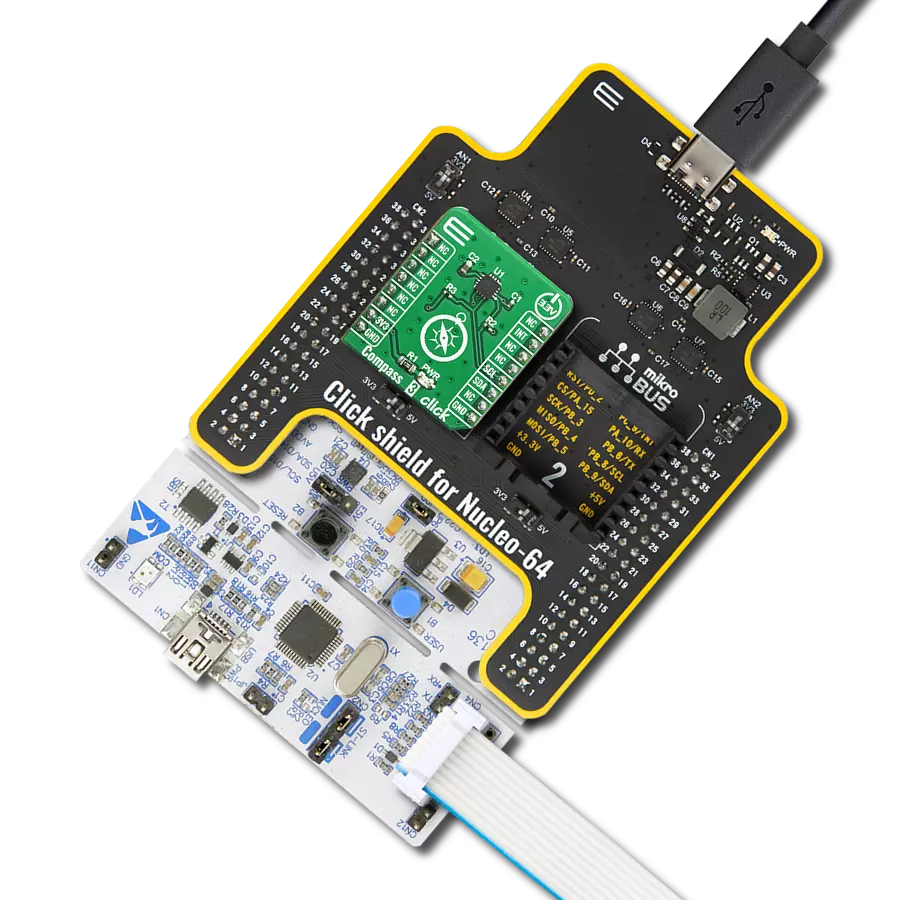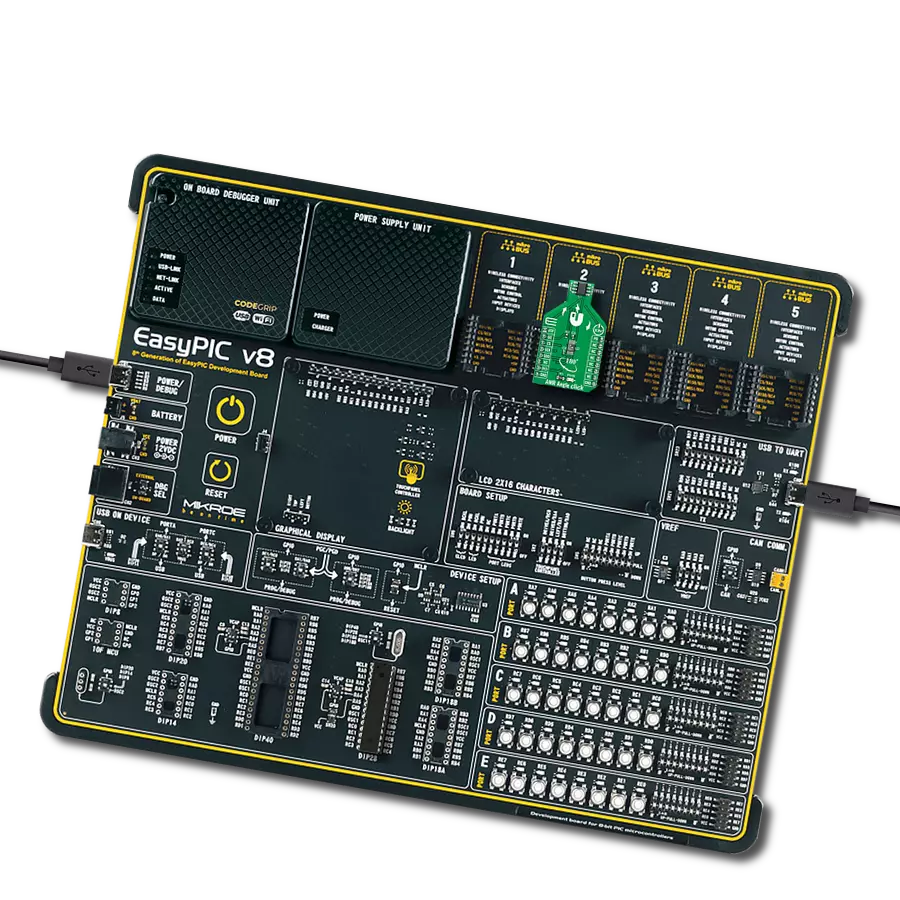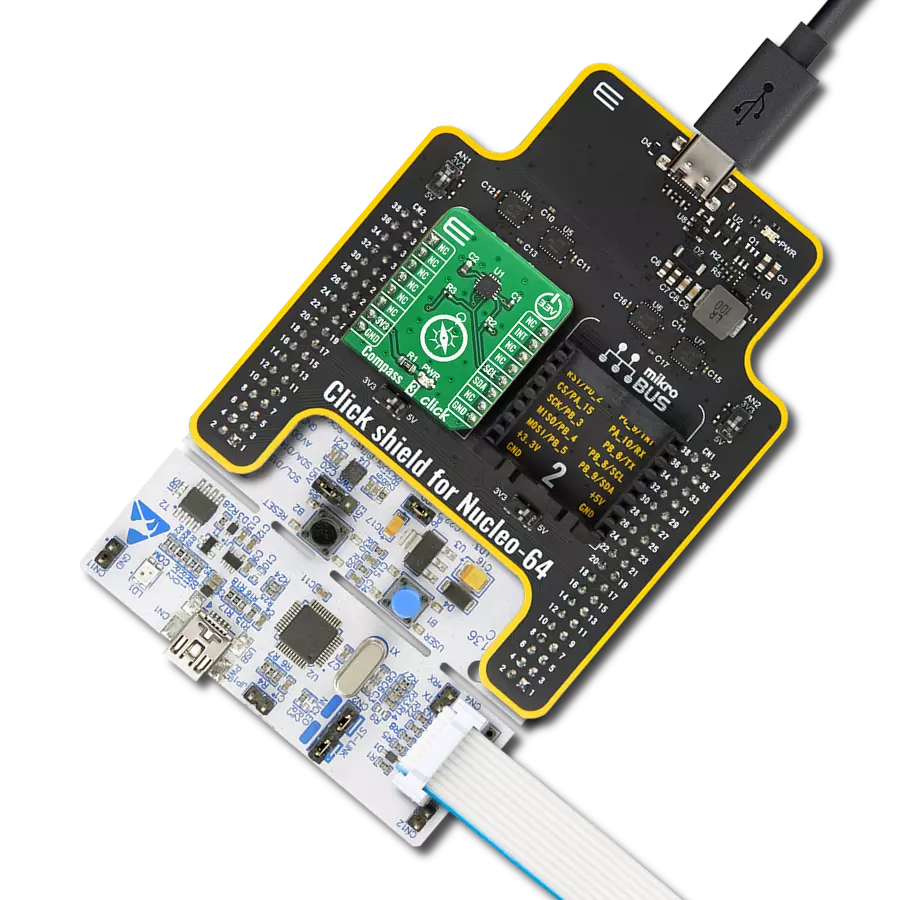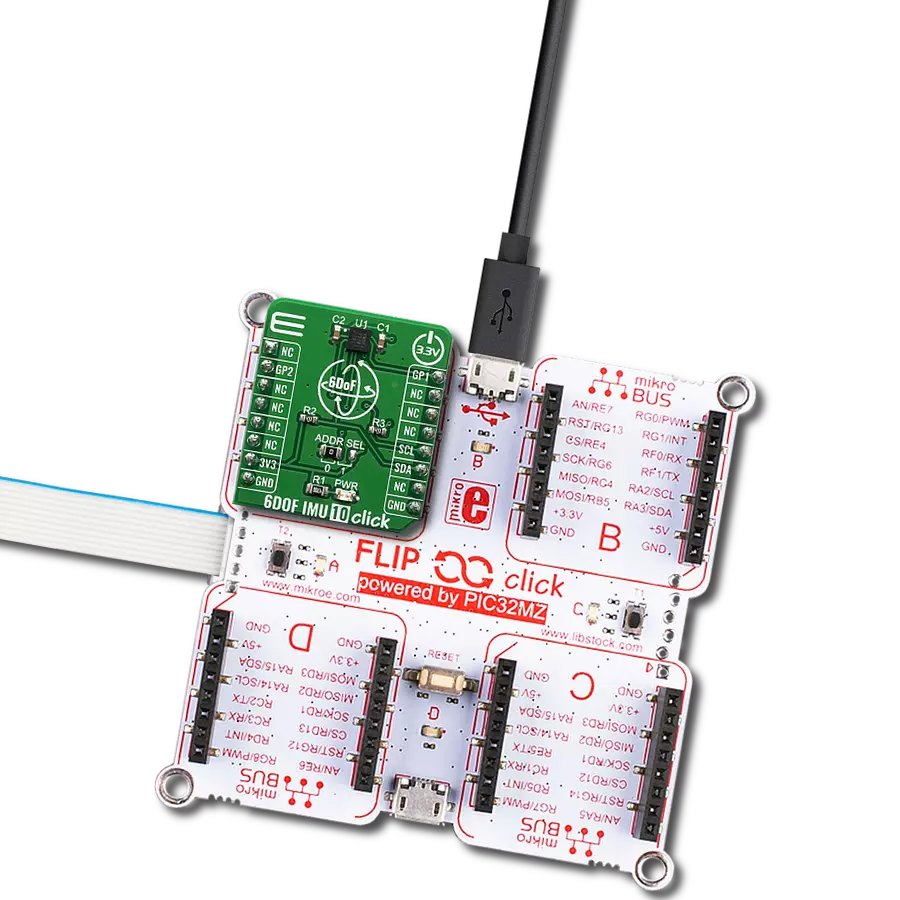Experience precise and reliable angular position measurement of the surrounding magnetic field with an AMR angle sensor
A
A
Hardware Overview
How does it work?
AMR Angle 2 Click is based on the ADA4570, an anisotropic magnetoresistive (AMR) sensor with integrated signal conditioning amplifiers and analog-to-digital converter (ADC) drivers from Analog Devices. It consists of two dies within one package, an AMR sensor, and a fixed gain instrumentation amplifier producing two differential analog outputs that indicate the angular position of the surrounding magnetic field. These amplified differential cosine and sine output signals are delivered with respect to the angle when the magnetic field is rotating in the x-axis and the y-axis (x-y) plane. The ADA4570 contains two Wheatstone bridges at a relative angle of 45° to one another. A complete rotation of a dipole magnet produces two periods on the sinusoidal outputs, so the magnetic angle calculated from the sine and cosine
differential outputs represents the physical orientation of the magnet with respect to the ADA4570 in the 0° to 180° measurement range. Within a homogeneous field in the x-y plane, the output signals of the ADA4570 are independent of the physical placement in the z-direction (air gap). As mentioned before, alongside the AMR sensor, this Click board™ also contains one high-speed, low-power, serial output successive approximation register (SAR) analog-to-digital converter (ADC), the MAX11122 from Analog Devices. It processes sine and cosine outputs and then forwards them to the MCU via the SPI interface for further processing. Apart from the SPI communication lines, this Click board™ uses several more pins on the mikroBUS™ such as CST and EOC, routed to the PWM and INT pins of the mikroBUS™ socket,
representing the signals with which the AD conversion starts and the signal indicating the completion of the conversion itself, respectively. Also, the ADA4570 has an integrated temperature sensor that provides a voltage ratiometric to the ADA4570 supply voltage at the AN pin of the mikroBUS™ socket used to monitor the system's operating temperature and provide the reference for further calibration. This Click board™ can only be operated with a 3.3V logic voltage level. The board must perform appropriate logic voltage level conversion before using MCUs with different logic levels. However, the Click board™ comes equipped with a library containing functions and an example code that can be used as a reference for further development.
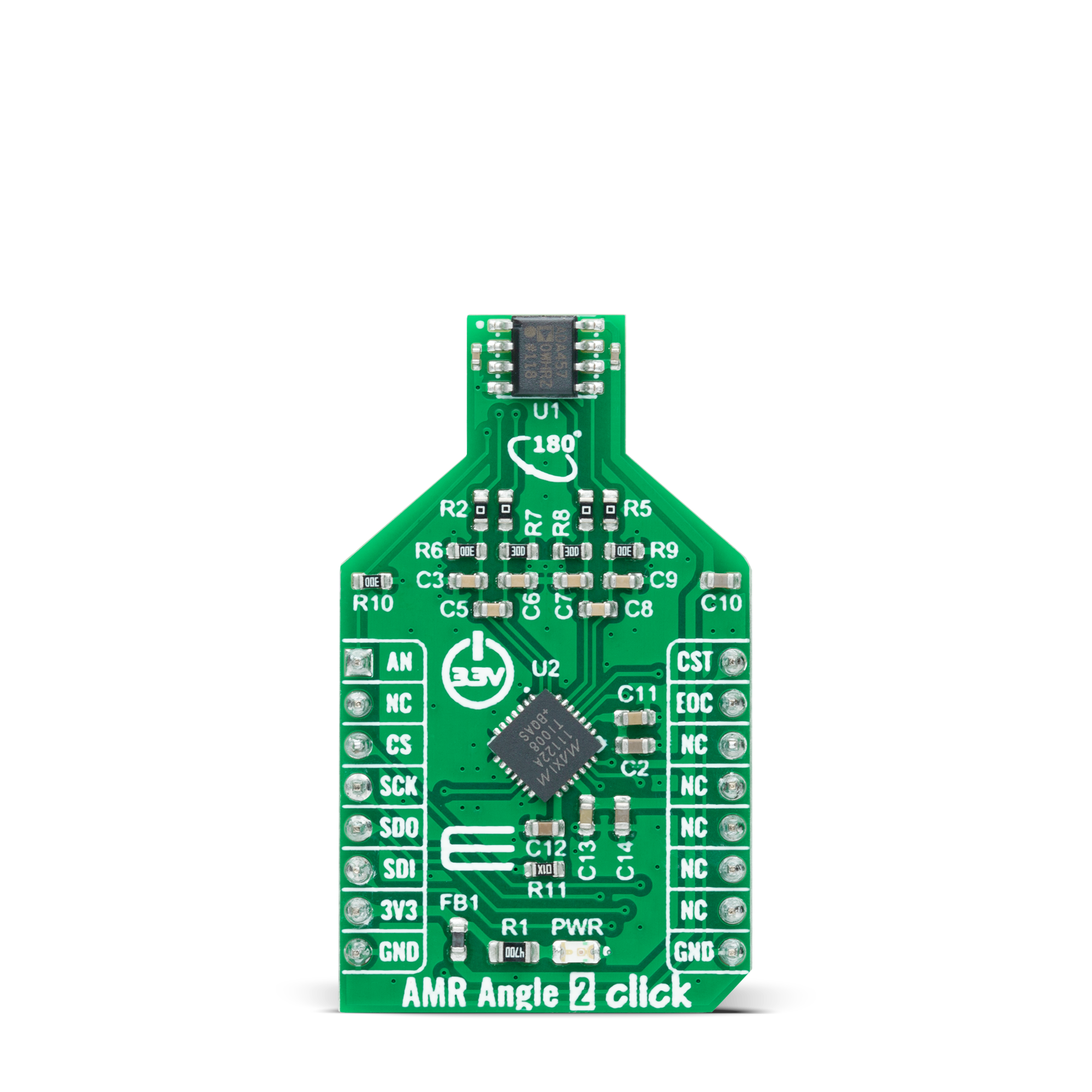
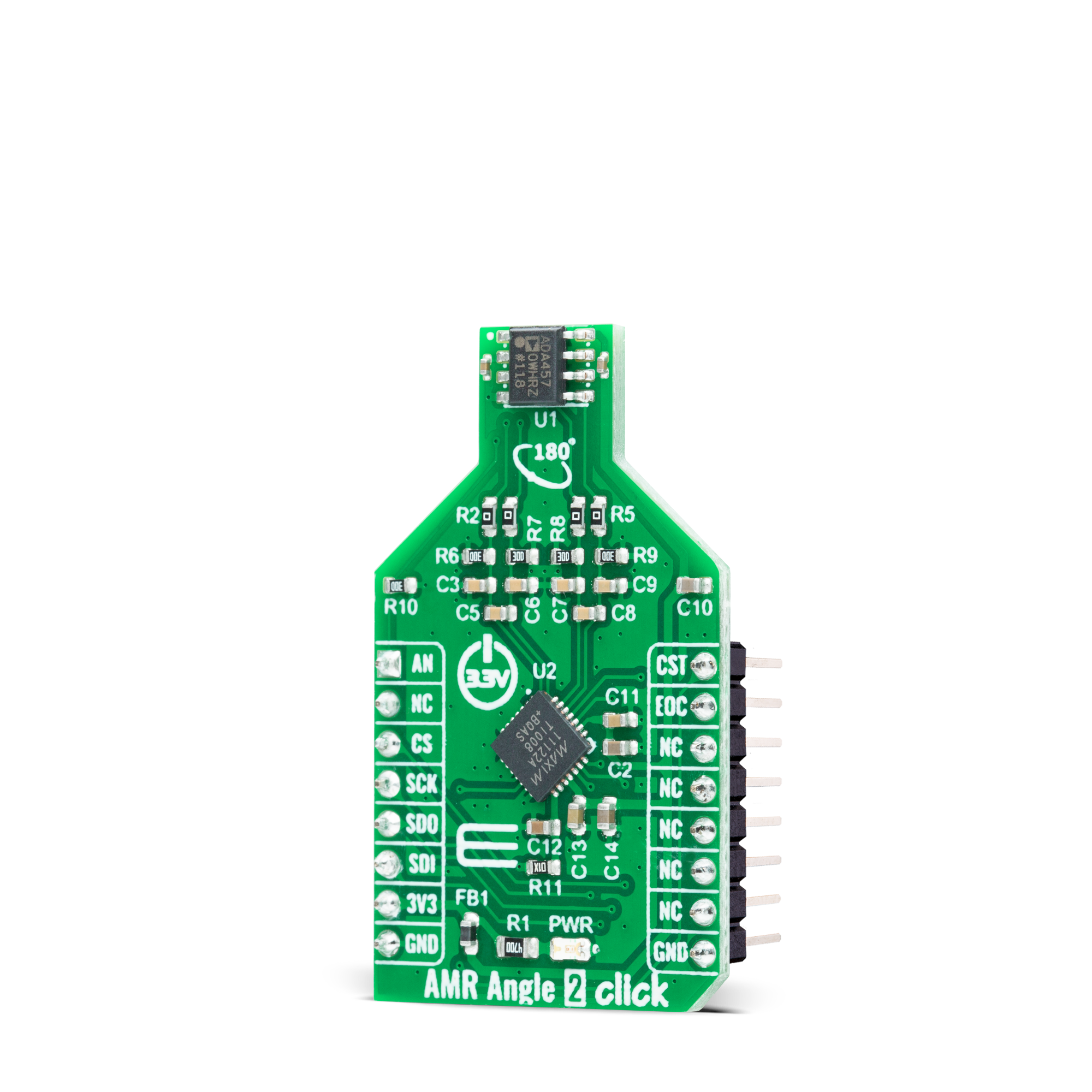
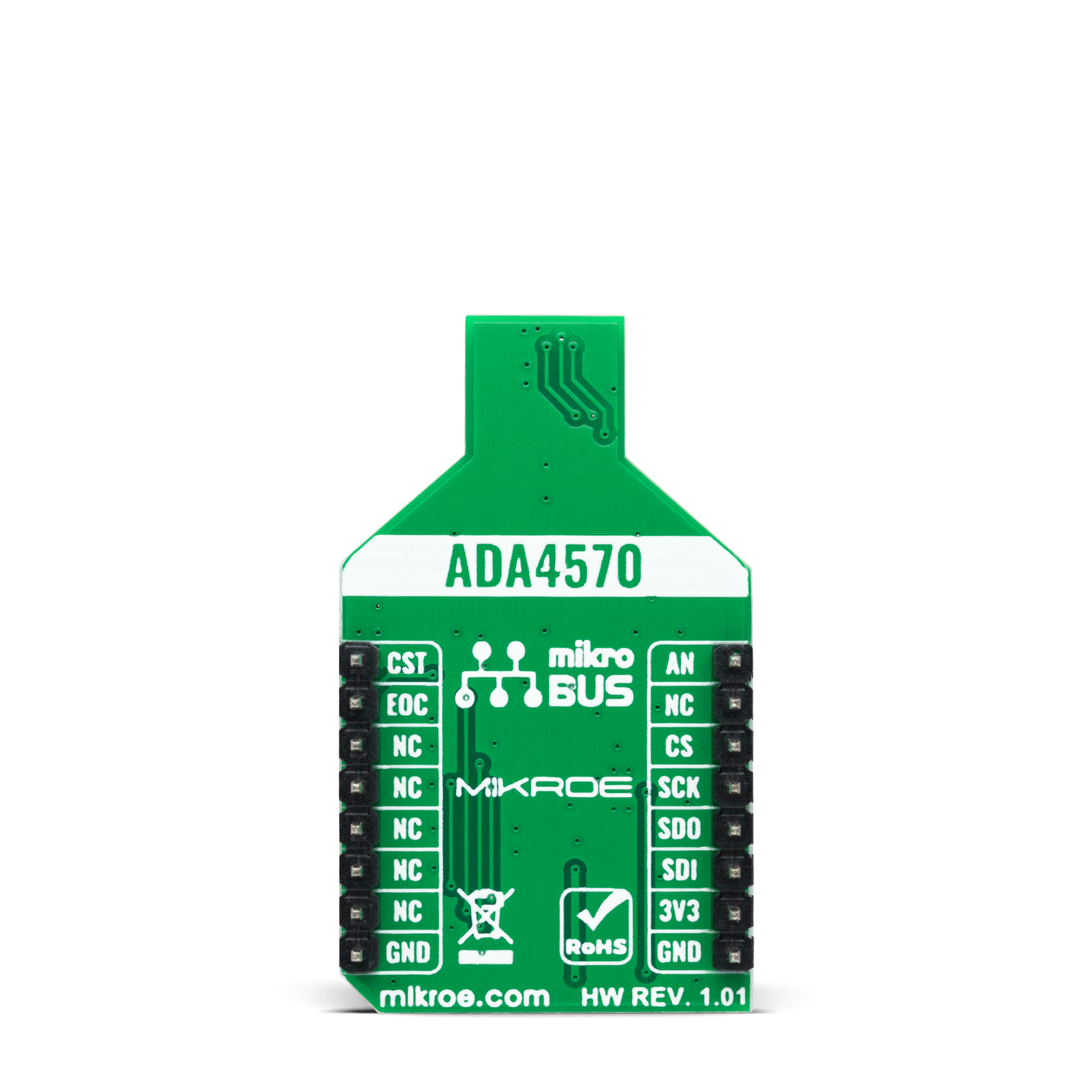
Features overview
Development board
PIC18F57Q43 Curiosity Nano evaluation kit is a cutting-edge hardware platform designed to evaluate microcontrollers within the PIC18-Q43 family. Central to its design is the inclusion of the powerful PIC18F57Q43 microcontroller (MCU), offering advanced functionalities and robust performance. Key features of this evaluation kit include a yellow user LED and a responsive
mechanical user switch, providing seamless interaction and testing. The provision for a 32.768kHz crystal footprint ensures precision timing capabilities. With an onboard debugger boasting a green power and status LED, programming and debugging become intuitive and efficient. Further enhancing its utility is the Virtual serial port (CDC) and a debug GPIO channel (DGI
GPIO), offering extensive connectivity options. Powered via USB, this kit boasts an adjustable target voltage feature facilitated by the MIC5353 LDO regulator, ensuring stable operation with an output voltage ranging from 1.8V to 5.1V, with a maximum output current of 500mA, subject to ambient temperature and voltage constraints.
Microcontroller Overview
MCU Card / MCU

Architecture
PIC
MCU Memory (KB)
128
Silicon Vendor
Microchip
Pin count
48
RAM (Bytes)
8196
You complete me!
Accessories
Curiosity Nano Base for Click boards is a versatile hardware extension platform created to streamline the integration between Curiosity Nano kits and extension boards, tailored explicitly for the mikroBUS™-standardized Click boards and Xplained Pro extension boards. This innovative base board (shield) offers seamless connectivity and expansion possibilities, simplifying experimentation and development. Key features include USB power compatibility from the Curiosity Nano kit, alongside an alternative external power input option for enhanced flexibility. The onboard Li-Ion/LiPo charger and management circuit ensure smooth operation for battery-powered applications, simplifying usage and management. Moreover, the base incorporates a fixed 3.3V PSU dedicated to target and mikroBUS™ power rails, alongside a fixed 5.0V boost converter catering to 5V power rails of mikroBUS™ sockets, providing stable power delivery for various connected devices.
Used MCU Pins
mikroBUS™ mapper
Take a closer look
Click board™ Schematic

Step by step
Project assembly
Software Support
Library Description
This library contains API for AMR Angle 2 Click driver.
Key functions:
amrangle2_read_angleThis function reads Vsin and Vcos voltages and converts them to angle in Degrees.amrangle2_read_temperatureThis function reads temperature measurements in Celsius.amrangle2_read_vsin_vcosThis function reads a voltage of sine and cosine differential signal outputs.
Open Source
Code example
The complete application code and a ready-to-use project are available through the NECTO Studio Package Manager for direct installation in the NECTO Studio. The application code can also be found on the MIKROE GitHub account.
/*!
* @file main.c
* @brief AMR Angle 2 Click example
*
* # Description
* This example demonstrates the use of AMR Angle 2 Click board by reading and displaying
* the magnet's angular position in Degrees and a system temperature in Celsius.
*
* The demo application is composed of two sections :
*
* ## Application Init
* Initializes the driver and performs the Click default configuration.
*
* ## Application Task
* Reads the magnet's angular position in degrees and a system temperature in Celsius
* and displays the results on the USB UART approximately every 100ms.
*
* @author Stefan Filipovic
*
*/
#include "board.h"
#include "log.h"
#include "amrangle2.h"
static amrangle2_t amrangle2;
static log_t logger;
void application_init ( void )
{
log_cfg_t log_cfg; /**< Logger config object. */
amrangle2_cfg_t amrangle2_cfg; /**< Click config object. */
/**
* Logger initialization.
* Default baud rate: 115200
* Default log level: LOG_LEVEL_DEBUG
* @note If USB_UART_RX and USB_UART_TX
* are defined as HAL_PIN_NC, you will
* need to define them manually for log to work.
* See @b LOG_MAP_USB_UART macro definition for detailed explanation.
*/
LOG_MAP_USB_UART( log_cfg );
log_init( &logger, &log_cfg );
log_info( &logger, " Application Init " );
// Click initialization.
amrangle2_cfg_setup( &amrangle2_cfg );
AMRANGLE2_MAP_MIKROBUS( amrangle2_cfg, MIKROBUS_1 );
if ( SPI_MASTER_ERROR == amrangle2_init( &amrangle2, &amrangle2_cfg ) )
{
log_error( &logger, " Communication init." );
for ( ; ; );
}
if ( AMRANGLE2_ERROR == amrangle2_default_cfg ( &amrangle2 ) )
{
log_error( &logger, " Default configuration." );
for ( ; ; );
}
log_info( &logger, " Application Task " );
}
void application_task ( void )
{
float angle, temperature;
if ( AMRANGLE2_OK == amrangle2_read_angle ( &amrangle2, &angle ) )
{
log_printf( &logger, " Angle: %.2f Degrees\r\n", angle );
}
if ( AMRANGLE2_OK == amrangle2_read_temperature ( &amrangle2, &temperature ) )
{
log_printf( &logger, " Temperature: %.2f C\r\n\n", temperature );
}
Delay_ms ( 100 );
}
int main ( void )
{
/* Do not remove this line or clock might not be set correctly. */
#ifdef PREINIT_SUPPORTED
preinit();
#endif
application_init( );
for ( ; ; )
{
application_task( );
}
return 0;
}
// ------------------------------------------------------------------------ END
Additional Support
Resources
Category:Magnetic
